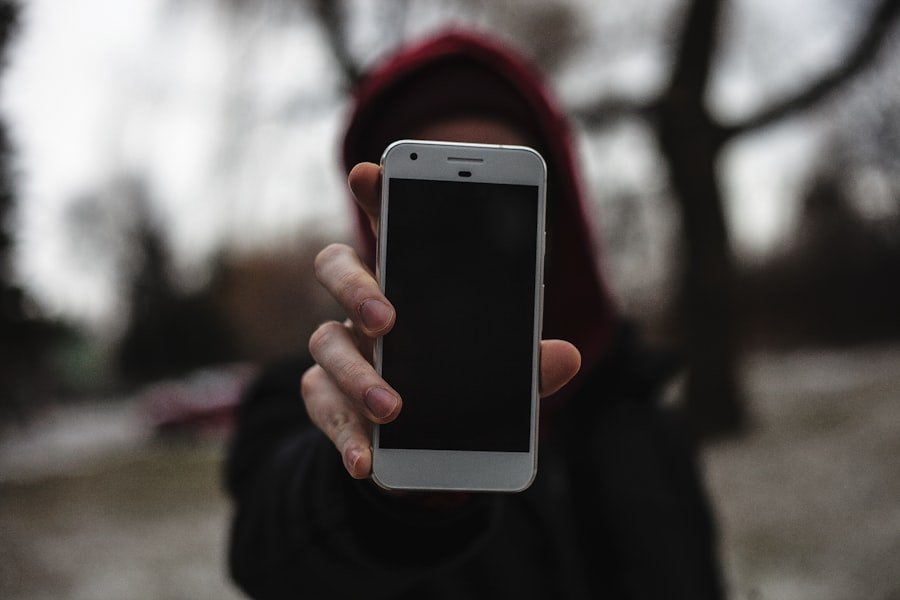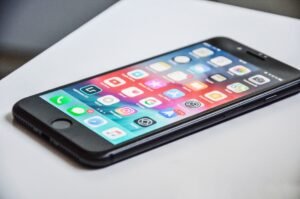The iPhone Black Screen of Death (BSOD) is a term that has become synonymous with a frustrating and often alarming experience for users. This phenomenon occurs when an iPhone becomes unresponsive, displaying a black screen that renders the device unusable. Unlike a simple screen freeze or a minor glitch, the Black Screen of Death typically indicates a more serious underlying issue, whether it be hardware-related or software-related.
Users may find themselves in a state of panic, especially if they rely heavily on their devices for communication, work, or personal tasks. When an iPhone experiences this issue, it can lead to a sense of helplessness. The device may not respond to touch, and pressing the power button or home button yields no results.
In some cases, the phone may vibrate or emit sounds, but the screen remains dark. This situation can arise suddenly, often without any prior warning signs, leaving users bewildered about what went wrong. Understanding the nature of the Black Screen of Death is crucial for diagnosing the problem and determining the appropriate steps to take for resolution.
Key Takeaways
- The iPhone Black Screen of Death is a common issue that can be caused by hardware or software problems.
- Common causes of the iPhone Black Screen of Death include hardware damage, software glitches, and battery issues.
- Hardware solutions for the iPhone Black Screen of Death may include checking the display connections, replacing the battery, or repairing the hardware components.
- Software solutions for the iPhone Black Screen of Death may involve force restarting the device, updating or restoring the software, or using recovery mode.
- Troubleshooting the iPhone Black Screen of Death can be done by trying different solutions such as resetting the device, checking for water damage, or testing the battery.
Common Causes of the iPhone Black Screen of Death
Several factors can contribute to the occurrence of the iPhone Black Screen of Death. One of the most prevalent causes is a drained battery. If the battery level drops too low, the device may shut down unexpectedly, leading to a black screen.
In some instances, users may mistakenly believe their iPhone is charged when it is not, especially if they have been using it heavily before it suddenly turns off. This scenario is particularly common in older models where battery health may have deteriorated over time. Another significant cause can be attributed to software issues.
This includes problems arising from operating system updates that do not install correctly or apps that malfunction and cause the device to crash. For instance, if an app becomes unresponsive during use, it can lead to a system-wide freeze, resulting in a black screen. Additionally, corrupted files or settings can disrupt normal operations, making it impossible for the device to boot up properly.
Users who frequently download apps from unverified sources may also be at risk of encountering software-related issues that could lead to a BSOD.
Hardware Solutions for the iPhone Black Screen of Death

When faced with the Black Screen of Death, one of the first steps users can take is to check for hardware-related issues. A common hardware solution involves inspecting the device for any physical damage. Cracked screens, water damage, or loose components can all contribute to display problems.
If there are visible signs of damage, it may be necessary to seek professional repair services to address these issues effectively. Another hardware solution involves performing a hard reset on the device. This process can often resolve temporary glitches that may be causing the black screen.
For most iPhone models, this can be done by pressing and quickly releasing the volume up button, followed by pressing and quickly releasing the volume down button, and then pressing and holding the side button until the Apple logo appears. This method forces the device to restart and can sometimes restore functionality if the issue is not severe.
Software Solutions for the iPhone Black Screen of Death
| Software Solutions | Success Rate | Difficulty Level |
|---|---|---|
| Force Restart | High | Low |
| Update iOS | Medium | Medium |
| Restore iPhone | High | High |
| DFU Mode Restore | High | High |
In addition to hardware solutions, addressing software-related issues is essential when dealing with the Black Screen of Death. One effective software solution is to attempt to restore the device using iTunes or Finder on a computer. By connecting the iPhone to a computer and launching iTunes (or Finder on macOS Catalina and later), users can initiate a restore process that may resolve underlying software problems.
This method can help recover data and restore the device to its factory settings if necessary. Another software solution involves entering recovery mode. This process allows users to troubleshoot more severe software issues that may be preventing their iPhone from functioning correctly.
To enter recovery mode, users must connect their device to a computer and follow specific button sequences depending on their iPhone model. Once in recovery mode, users can choose to update or restore their device through iTunes or Finder, potentially resolving any software conflicts that led to the black screen.
Troubleshooting the iPhone Black Screen of Death
Troubleshooting is a critical step in addressing the Black Screen of Death effectively. Users should begin by checking for any signs of life from their device. This includes looking for vibrations when pressing buttons or listening for sounds when notifications arrive.
If there are no signs of activity, it may indicate a more severe issue requiring immediate attention. Next, users should consider whether any recent changes were made before the black screen appeared. For instance, if an update was installed or a new app was downloaded shortly before the issue arose, these factors could be contributing to the problem.
In such cases, uninstalling problematic apps or rolling back updates may help restore functionality. Additionally, users should ensure that their device is adequately charged and try using different charging cables or adapters to rule out charging issues.
Preventing the iPhone Black Screen of Death

Preventive measures can significantly reduce the likelihood of encountering the Black Screen of Death in the future. One essential step is to keep the device’s software up to date. Regularly updating iOS ensures that users benefit from bug fixes and performance improvements that can mitigate potential issues leading to a black screen.
Users should also be cautious when downloading apps, opting for those from reputable developers and avoiding unverified sources that may introduce malware or corrupted files. Maintaining battery health is another crucial aspect of prevention. Users should monitor their battery usage and replace aging batteries when necessary.
Apple provides tools within iOS that allow users to check battery health and performance metrics, enabling them to make informed decisions about battery replacement before issues arise. Additionally, practicing good charging habits—such as avoiding extreme temperatures and not letting the battery drain completely—can prolong battery life and reduce the risk of sudden shutdowns.
Seeking Professional Help for the iPhone Black Screen of Death
If troubleshooting efforts fail to resolve the Black Screen of Death, seeking professional help becomes imperative. Authorized service providers or Apple Support can diagnose hardware issues that may not be apparent to users. Technicians have access to specialized tools and diagnostic software that can identify underlying problems with components such as the display, logic board, or battery.
In some cases, professional repair services may be necessary to address complex issues that require advanced technical skills. For example, if water damage is suspected or if internal components need replacement, attempting DIY repairs could lead to further complications. By entrusting repairs to professionals, users can ensure that their devices are handled with care and expertise, increasing the likelihood of successful restoration.
Dealing with the iPhone Black Screen of Death
Dealing with the iPhone Black Screen of Death can be an overwhelming experience for users who depend on their devices for daily tasks and communication. Understanding its causes—whether they stem from hardware malfunctions or software conflicts—is essential for effective resolution. By employing both hardware and software solutions, users can often restore functionality without resorting to professional help.
However, when troubleshooting proves ineffective, seeking assistance from authorized service providers is crucial for addressing more severe issues. Preventive measures play a vital role in minimizing future occurrences of this frustrating problem. By staying informed about best practices for device maintenance and being proactive about updates and battery health, users can significantly reduce their chances of encountering the dreaded Black Screen of Death again in the future.
If you’re experiencing the iPhone black screen of death, it might be helpful to explore other smartphone options that offer reliability and robust performance. For instance, the Motorola Moto G Stylus 5G (2023) is a versatile and powerful smartphone that could be a great alternative. It combines enhanced features with the reliability of the Motorola brand. To learn more about this smartphone, you can read a detailed review here. This article might provide you with insights into whether this phone meets your needs and preferences, especially if you’re considering a switch from your current iPhone.
FAQs
What is the iPhone black screen of death?
The iPhone black screen of death refers to a situation where the iPhone’s screen becomes unresponsive and remains black, despite the device being powered on.
What causes the iPhone black screen of death?
The black screen of death can be caused by a variety of factors, including software glitches, hardware issues, or a drained battery.
How can I fix the iPhone black screen of death?
To fix the iPhone black screen of death, you can try force restarting the device, charging the battery, updating the software, or seeking professional help from an Apple Store or authorized service provider.
Is the iPhone black screen of death a common issue?
Yes, the iPhone black screen of death is a relatively common issue reported by iPhone users. It can occur on various iPhone models and iOS versions.
Can I prevent the iPhone black screen of death from happening?
While it may not be possible to completely prevent the black screen of death, you can minimize the risk by keeping your iPhone’s software up to date, avoiding unauthorized repairs, and using genuine Apple accessories.









